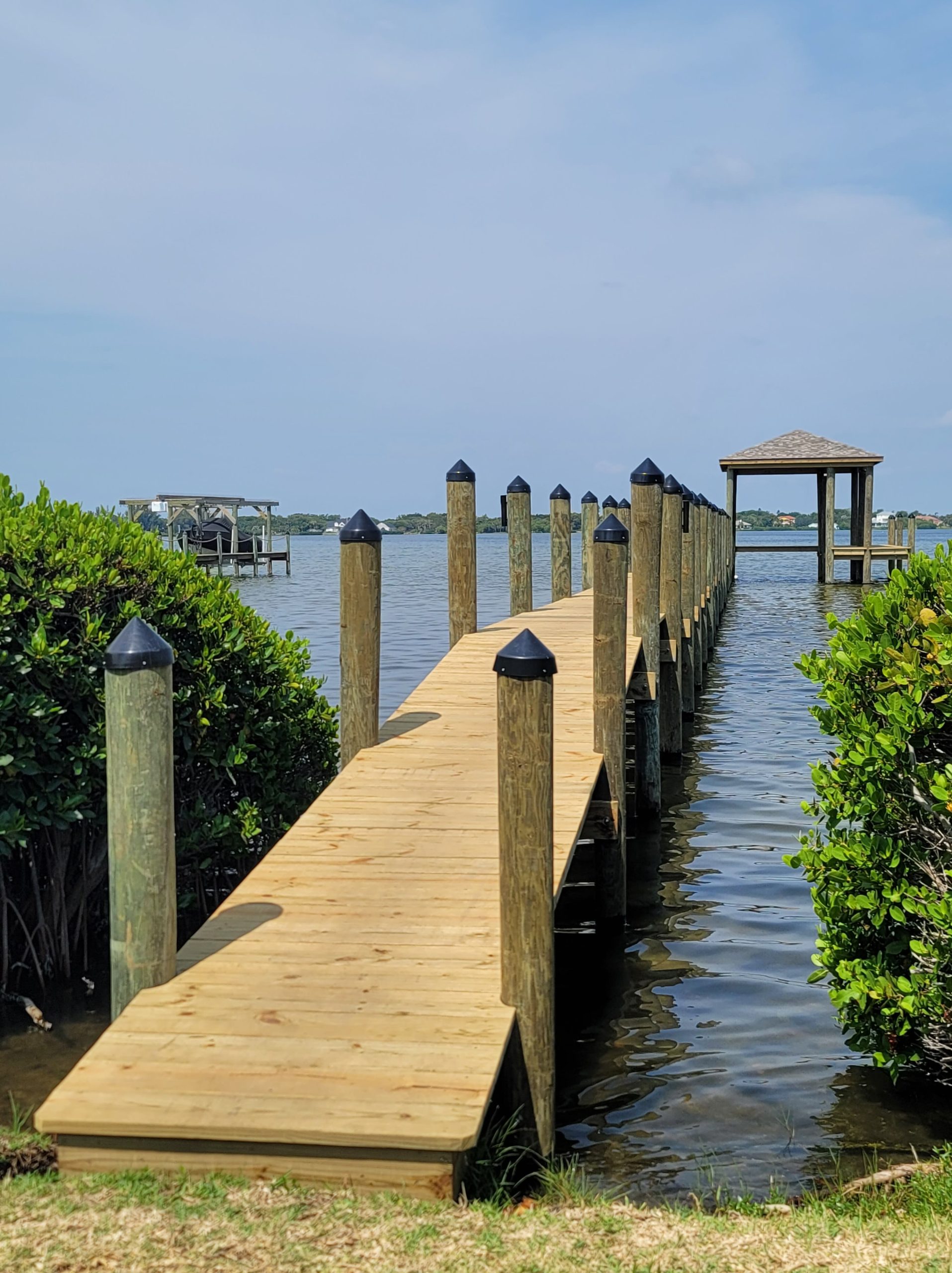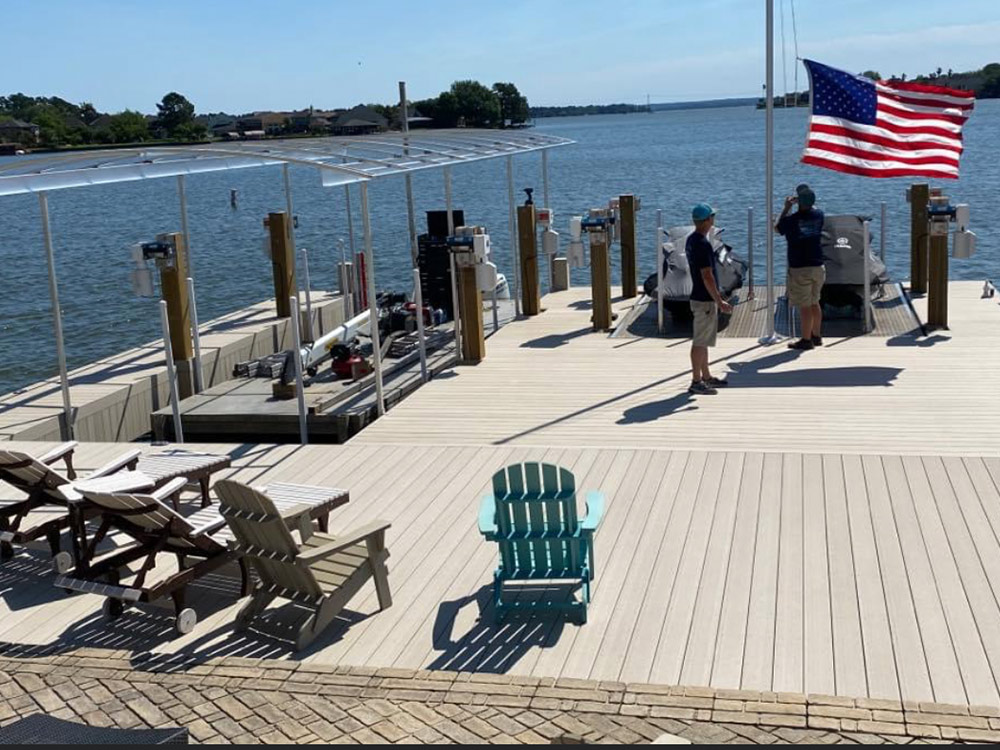Effective Dock Fixing Techniques: Guaranteeing Architectural Integrity
Making certain the structural honesty of anchors through efficient repair work strategies is extremely important for the durability and safety of aquatic centers. This entails a multi-faceted technique starting with detailed assessments utilizing advanced modern technologies like finder devices and remotely operated vehicles (ROVs) to detect both noticeable and hid damages. Consequently, picking the appropriate repair service materials, such as corrosion-resistant alloys and composite materials, is vital for resilience. Structural support approaches, consisting of the implementation of cross-bracing systems and load-distribution plates, play a vital duty in mitigating anxiety points. The importance of these strategies ends up being evident when checking out advanced repair service methods and preventative maintenance approaches.
Assessing Dock Damages
Assessing dock damage is an important primary step in making sure the architectural integrity and security of any kind of docking facility. This initial examination entails a comprehensive examination to identify both visible and concealed problems. Key aspects to take a look at consist of the dock's foundation, pilings, decking, and hardware. Each element needs to be looked at for indicators of wear, rot, deterioration, or other forms of deterioration that can endanger the architectural honesty.
Structural engineers or qualified inspectors generally carry out these assessments using specialized strategies and devices. For example, underwater inspections might employ finder tools or from another location operated cars (ROVs) to discover submerged damage. Over water, aesthetic assessments are matched by using dampness meters and various other analysis devices to uncover underlying issues not quickly noticeable to the nude eye.

Choosing Repair Materials
Picking the ideal repair service materials is a pivotal action in the dock repair process, one that directly affects the durability and performance of the repaired framework. Product selection must be driven by variables such as ecological conditions, load-bearing needs, and compatibility with existing dock parts.
In addition to wood, composite materials are increasingly preferred because of their sturdiness and low upkeep requirements. Compounds, normally made from a blend of plastic and timber fibers, supply exceptional resistance to rot, insects, and UV damages. For metal anchors, choosing corrosion-resistant alloys such as galvanized steel or marine-grade light weight aluminum is important to prevent corrosion and ensure architectural stability in saline water problems.
Epoxy materials and marine-grade sealers are important for repairing cracks and securing joints, supplying a water resistant obstacle and boosting the dock's overall stamina. By diligently selecting top notch products, dock repair work can attain long-lasting results, consequently guarding versus future degradation and guaranteeing risk-free, trusted use.
Structural Support Strategies
Reliable architectural reinforcement strategies are crucial in making sure the security and durability of dock repairs. This method is particularly reliable for anchors subjected to heavy loads or harsh ecological problems.
One more vital technique is the application of fiber-reinforced polymers (FRP) These materials supply high strength-to-weight proportions and superb resistance to deterioration, making them suitable for strengthening wooden or concrete anchors. FRP can be applied in sheets or strips and bound with epoxy resins to boost structural honesty.
Bracing and anchoring systems additionally play a critical function in structural support. Cross-bracing, utilizing metal or wood beam of lights, can counteract side pressures, decreasing guiding and motion. Anchoring systems, such as helical piers or driven heaps, supply a stable structure by transferring lots to deeper, much more stable dirt layers.
Lastly, the assimilation of load-distribution plates can help disperse weight more equally across the dock's surface area, mitigating local tension factors. These methods jointly guarantee that anchors remain secure and robust, with the ability of standing up to the rigors of their functional atmosphere.
Advanced Fixing Methods

Another innovative method entails undersea welding, which permits for repair services to be performed without the requirement to dewater the area. This method is particularly helpful for resolving structural problems in immersed dock elements, making sure marginal disturbance to operations. Improved welding strategies, combined with robotic systems, deliver accuracy and dependability, thus expanding the lifespan of the dock.
Additionally, cathodic security systems are executed to avoid rust in metallic dock structures. By utilizing sacrificial anodes or satisfied present systems, these methods successfully reduce the electrochemical processes that lead to material damage.
Finally, progressed surveillance modern technologies, such as structural health and wellness monitoring (SHM) systems, offer real-time data on the condition of dock structures. These systems make it possible for positive maintenance and timely treatments, eventually ensuring the lasting structural honesty of the dock.
Maintenance and Prevention
Maintenance and avoidance are essential concepts that underpin the durability and safety of dock structures. Routine assessments are critical, enabling very early detection of wear and tear, prospective weaknesses, and ecological impacts. An aggressive approach, entailing routine checks for deterioration, visit this site rot, and architectural changes, reduces pricey fixings and extends the dock's functional life.
Safety nets need to consist of applying safety coatings to steel parts to defend against corrosion and utilizing treated timber to withstand degeneration. Furthermore, ensuring appropriate drainage and air flow can protect against water accumulation, which is a typical source of architectural destruction. Incorporating high quality products and sticking to manufacturer guidelines throughout building and construction and repair work stages additionally play essential functions in enhancing longevity.

Educating employees in dock upkeep best practices guarantees consistent application of safety nets. Leveraging technological advances, such as drones for examinations and sensing units for real-time surveillance, can additionally improve maintenance efforts. By focusing on see page upkeep and avoidance, dock owners can ensure architectural honesty, functional security, and affordable management over the dock's lifespan.
Verdict
In verdict, maintaining the architectural honesty of marine facilities demands comprehensive dock repair service methods. Advanced repair service strategies, coupled with routine upkeep techniques, make certain the dock remains functional and safe under varied ecological problems.
Guaranteeing the structural stability of anchors via reliable repair techniques is vital for the durability and safety and security of aquatic centers.Picking the ideal repair materials is a critical step in the dock remediation process, one that directly influences the longevity and performance of the repaired framework.Effective architectural support strategies are critical in ensuring the security and long life of dock fixings. By look at this website focusing on upkeep and avoidance, dock proprietors can guarantee structural integrity, operational safety and security, and cost-efficient monitoring over the dock's life-span.
In final thought, preserving the structural honesty of aquatic centers requires extensive dock repair techniques.